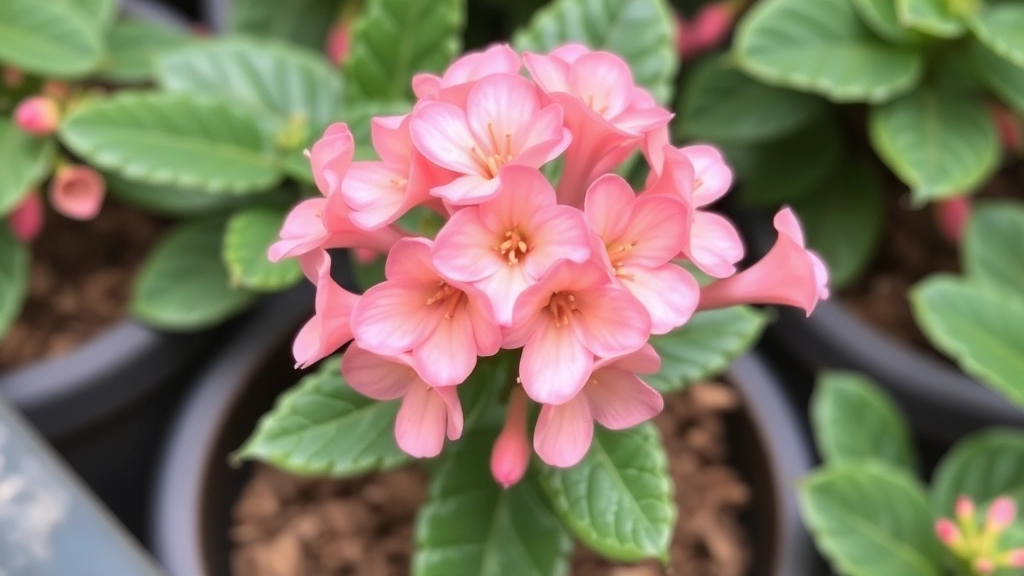Kalanchoe Daigremontiana Pink Butterflies
Have you ever come across the stunning Kalanchoe Daigremontiana Pink Butterflies? This unique succulent, with its vibrant pink plantlets, is a showstopper in any garden or indoor space. If you’re looking to add a touch of the exotic to your plant collection, understanding the care requirements of this beauty is essential.
From optimal sunlight exposure to the best soil type, knowing how to properly care for your Kalanchoe Daigremontiana Pink Butterflies will ensure it thrives. Keep reading to discover everything you need to know about watering, propagation, and even handling its invasive nature. Let’s dive into the world of this fascinating plant and make your gardening journey a successful one!
Care Requirements for Kalanchoe Daigremontiana
Are you struggling to keep your Kalanchoe Daigremontiana healthy? You’re not alone. Many plant enthusiasts find this unique succulent both fascinating and challenging.
Light Requirements
Kalanchoe Daigremontiana thrives in bright, indirect sunlight.
- Ideal Location: A south or west-facing window is perfect.
- Avoid Direct Sunlight: Too much direct sun can scorch the leaves.
Temperature and Humidity
This plant prefers a warm environment.
- Temperature Range: Aim for 20-25°C (68-77°F).
- Humidity Levels: Average household humidity is sufficient.
Watering Needs
Understanding how to water your Kalanchoe is crucial.
- Frequency: Water only when the top inch of soil is dry.
- Method: Soak the soil thoroughly, then let it drain.
Fertilization
Feeding your Kalanchoe can boost its growth.
- Type of Fertilizer: Use a balanced, water-soluble fertilizer.
- Frequency: Fertilize every 4-6 weeks during the growing season.
Pruning and Cleaning
Regular maintenance keeps your plant looking its best.
- Prune Dead Leaves: Remove any yellowing or dead leaves promptly.
- Dusting: Wipe leaves with a damp cloth to remove dust.
To learn more about how to propagate this fascinating plant, check out our guide on propagating Kalanchoe Mother of Thousands. For additional tips on keeping your succulents healthy, visit our ultimate guide to growing and caring for Kalanchoe.
Growth and Maintenance
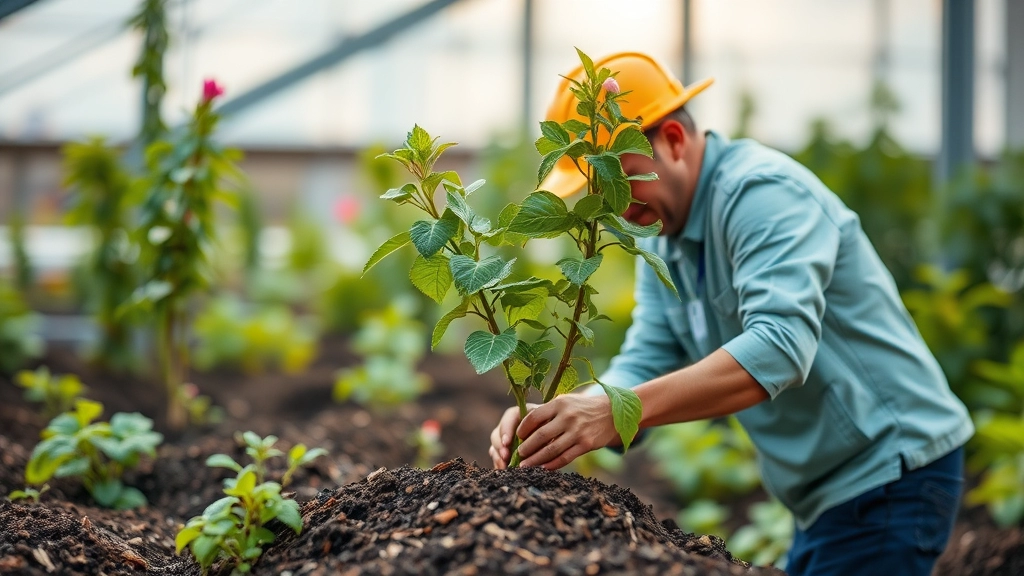
So, you’ve decided to bring a Kalanchoe Daigremontiana into your life.
You might be wondering, “How do I keep this beauty thriving?”
Let’s dive into the essentials of growth and maintenance that’ll keep your plant happy and healthy.
Light Requirements
Kalanchoe Daigremontiana loves bright, indirect sunlight.
- Ideal Spot: A south or west-facing window works wonders.
- Signs of Too Much Sun: If the leaves start to burn or turn yellow, it’s time to move it back a bit.
Temperature and Humidity
These plants thrive in warm conditions.
- Optimal Temperature: Aim for 18-24°C (65-75°F).
- Humidity Levels: They prefer low humidity, so no need to mist them.
Pruning and Shaping
Keeping your Kalanchoe tidy is key.
- Regular Pruning: Trim off any dead or damaged leaves to encourage new growth.
- Shaping: If it starts to look leggy, don’t hesitate to cut back a bit.
Fertilizing
Feeding your plant is essential, but don’t overdo it.
- Frequency: Fertilize every 4-6 weeks during the growing season (spring and summer).
- Type of Fertilizer: A balanced, water-soluble fertilizer works best.
Repotting
As your Kalanchoe grows, it might need a bigger home.
- When to Repot: If you notice roots coming out of the drainage holes, it’s time.
- Pot Size: Choose a pot that’s one size larger, ensuring it has good drainage.
Propagation Techniques
When it comes to propagating Kalanchoe Daigremontiana, many enthusiasts wonder about the most effective methods.
Understanding Propagation
Kalanchoe Daigremontiana, also known as Mother of Thousands, is renowned for its ability to produce numerous offsets. This makes it relatively easy to propagate, whether you’re a seasoned gardener or a novice.
Indoor vs. Outdoor Growing Conditions
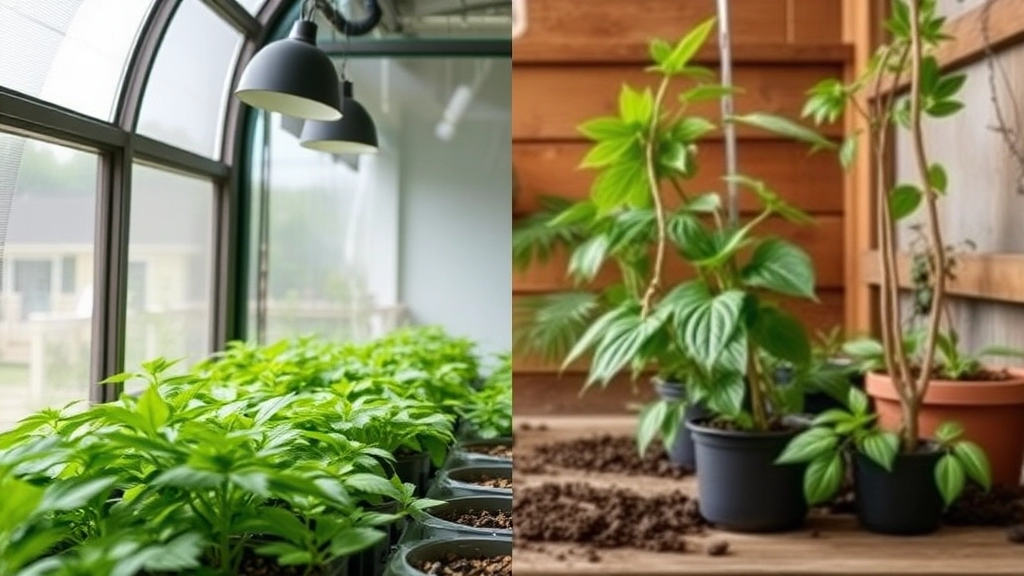
When deciding whether to grow Kalanchoe Daigremontiana indoors or outdoors, you may wonder about the best environment for this unique succulent.
Indoor Growing Conditions
Growing Kalanchoe Daigremontiana indoors can be quite rewarding, provided you create the right conditions. Here are some essential factors to consider:
- Light: This plant thrives in bright, indirect sunlight. A south-facing window is ideal, but be cautious of direct sunlight, which can scorch the leaves.
- Temperature: Kalanchoe prefers warmer temperatures, ideally between 20°C to 25°C. Avoid cold drafts and sudden temperature changes.
- Humidity: This succulent does not require high humidity. Average indoor humidity levels are sufficient for its growth.
- Potting: Use a well-draining potting mix to prevent root rot. Terracotta pots are a great choice as they allow moisture to escape.
Outdoor Growing Conditions
If you’re considering outdoor cultivation, there are a few things to keep in mind:
- Light: Kalanchoe loves bright sunlight. Choose a location that receives at least six hours of sunlight daily.
- Temperature: This plant is not frost-tolerant. Ensure that temperatures stay above 10°C, especially during the winter months.
- Soil: Similar to indoor conditions, well-draining soil is crucial. Sandy or gritty soil works wonders for outdoor growth.
- Watering: Outdoor plants may need more frequent watering during hot spells, but always check the soil moisture first.
Common Pests and Diseases
As we delve into the care of Kalanchoe Daigremontiana, it’s essential to consider the common pests and diseases that can affect this resilient plant.
Pests
Kalanchoe Daigremontiana can attract a few unwelcome guests. Here’s a quick rundown of the most common pests you might encounter:
- Aphids: These tiny insects can cluster on new growth, sucking sap and potentially causing stunted growth.
- Mealybugs: Recognizable by their cotton-like appearance, mealybugs can weaken the plant by feeding on its sap.
- Spider Mites: These minuscule pests thrive in dry conditions and can cause yellowing leaves and webbing on the plant.
- Scale Insects: Often mistaken for small bumps on the stems and leaves, scale insects can lead to leaf drop and overall decline.
Treatment Options
To keep your Kalanchoe healthy, consider these treatment options:
- Insecticidal Soap: A natural way to combat pests, insecticidal soap can be sprayed directly onto the affected areas.
- Neem Oil: This organic solution not only deters pests but also helps with fungal issues.
- Regular Inspection: Check your plants regularly for signs of pests. Early detection is key.
Diseases
In addition to pests, Kalanchoe Daigremontiana can suffer from a few diseases, primarily due to improper care.
- Root Rot: Often caused by overwatering, root rot can lead to wilting and yellowing leaves. Ensure your pot has drainage holes.
- Leaf Spot: This fungal infection manifests as dark spots on the leaves. It’s often a sign of excessive moisture, so adjust your watering routine.
Prevention Tips
- Proper Watering: Allow the soil to dry out between waterings to prevent root rot. For more detailed guidance, check out our expert tips on Kalanchoe care.
- Good Air Circulation: Ensure your plant has enough space for air to circulate, reducing humidity around the leaves.
- Healthy Soil: Use well-draining soil to keep your Kalanchoe thriving. Learn more about the best soil for Kalanchoe to ensure optimal growth.
Blooming and Flower Care
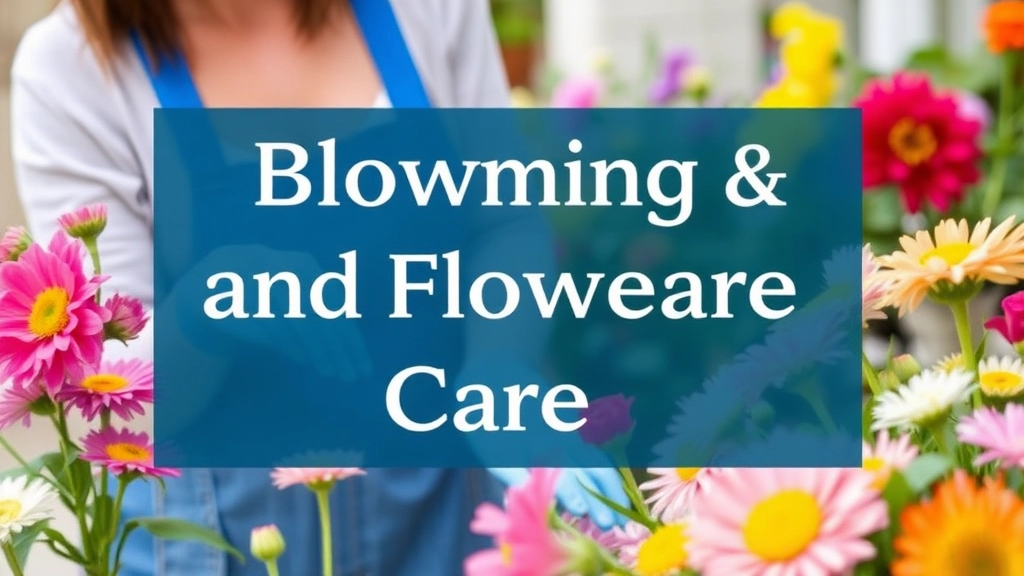
So, you’ve got your Kalanchoe Daigremontiana, and you’re wondering how to get it blooming beautifully?
Let’s dive into the essentials of blooming and flower care for this stunning plant.
Understanding Blooming
Kalanchoe Daigremontiana, also known as Mother of Thousands, has a unique way of flowering.
It typically blooms in the late winter to early spring.
Here are some tips to encourage those lovely flowers:
- Light: Ensure it gets plenty of bright, indirect sunlight. Too little light can hinder blooming.
- Temperature: Keep it in a warm spot, ideally between 20-25°C (68-77°F).
- Fertilizer: Use a balanced, water-soluble fertilizer every few weeks during the growing season. This can help boost blooming.
- Pruning: After flowering, prune back any spent blooms. This encourages new growth and can lead to more flowers down the line.
Flower Care Tips
Once those blooms appear, you want to keep them looking their best. Here’s how:
- Watering: Keep the soil slightly moist but not soggy. Overwatering can lead to root rot, which is a real buzzkill for your blooms.
- Humidity: Kalanchoe prefers a dry atmosphere. Avoid overly humid conditions, as this can affect flower quality.
- Pest Watch: Keep an eye out for pests like aphids or mealybugs. They can mess with your flowers, so act fast if you spot them.
Soil and Potting Recommendations
When it comes to cultivating Kalanchoe Daigremontiana, selecting the right soil and potting conditions is crucial for its health and growth.
What Soil Works Best?
Kalanchoe Daigremontiana thrives in well-draining soil. This prevents root rot, a common issue for succulents. Here are some soil recommendations:
- Cactus Mix: Specifically designed for succulents, this mix provides excellent drainage.
- Perlite or Pumice: Adding these materials to your soil can enhance aeration and drainage.
- Homemade Mix: Combine regular potting soil with sand and perlite in equal parts for a tailored option.
Potting Tips
Choosing the right pot is equally important. Here’s what to consider:
- Drainage Holes: Always opt for pots with drainage holes to allow excess water to escape.
- Size: Select a pot that is slightly larger than the root ball to give it room to grow, but not too big, as excess soil can retain moisture.
- Material: Terracotta pots are a popular choice, as they help wick moisture away from the soil.
Repotting Considerations
- Frequency: Repot every 2-3 years or when the plant outgrows its current pot.
- Timing: Late spring or early summer is ideal for repotting, as the plant is actively growing.
For more detailed guidance, check out our care and propagation tips for Kalanchoe Daigremontiana and learn how to care for Kalanchoe Mother of Thousands.
Watering and Fertilization Guidelines
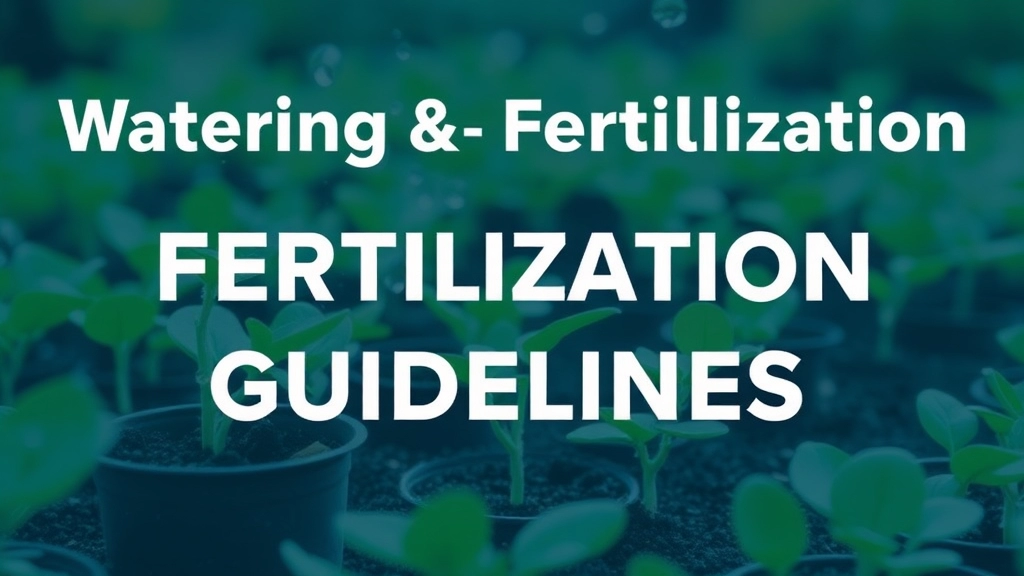
So, you’ve got your Kalanchoe Daigremontiana, and now you’re wondering how to keep it thriving, right?
Watering Tips
- Frequency: Water your Kalanchoe when the top inch of the soil feels dry. This usually means every 1-2 weeks, but it can vary based on your home’s humidity.
- Method: Give it a good soak, allowing water to drain from the bottom. This helps avoid waterlogging, which can lead to root rot.
- Signs of Thirst: If the leaves start to wrinkle or look shriveled, it’s time for a drink.
- Seasonal Changes: In winter, cut back on watering. The plant goes dormant, so it doesn’t need as much moisture.
Fertilization Tips
- Type of Fertilizer: Use a diluted, balanced liquid fertilizer during the growing season (spring and summer). Look for something like a 20-20-20 mix.
- Frequency: Fertilize every 4-6 weeks to keep your Kalanchoe happy and healthy.
- Signs of Over-Fertilization: Yellowing leaves or burnt tips? You might be overdoing it. Less is more!
Quick Checklist:
- Water when the top inch is dry.
- Soak thoroughly, then let it drain.
- Fertilize every 4-6 weeks in spring and summer.
- Use a balanced liquid fertilizer.
Handling Toxicity
When it comes to Kalanchoe Daigremontiana, one of the pressing concerns for many plant enthusiasts is its toxicity.
What should you know to keep your home and loved ones safe?
Understanding Toxicity
Kalanchoe Daigremontiana, also known as Mother of Thousands, contains compounds that can be harmful if ingested.
- Toxic to Pets: The plant can cause gastrointestinal issues in cats and dogs. Symptoms may include vomiting, diarrhea, and lethargy. For more details, check out Is Kalanchoe Poisonous to Dogs: Symptoms & Treatment.
- Human Safety: While not highly toxic to humans, ingestion can lead to mild stomach upset. It’s best to keep it out of reach of children.
Safety Precautions
To ensure a safe environment, consider these practical tips:
- Placement: Position your Kalanchoe in high, inaccessible areas to deter curious pets and children.
- Education: Inform family members about the plant’s toxicity. Knowledge is the first step in prevention. For comprehensive care tips, refer to the Complete Care Guide for Kalanchoe Mother of Thousands.
- Signs of Distress: Be aware of symptoms in pets and humans. If ingestion occurs, contact a veterinarian or medical professional immediately.
Varieties and Visual Appeal of Kalanchoe Daigremontiana
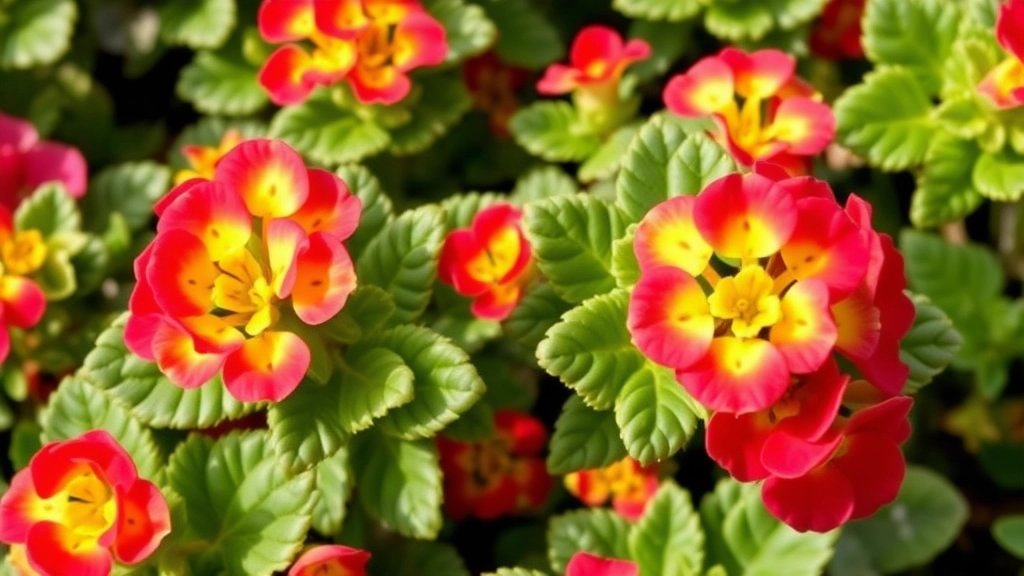
So, you’re curious about the different varieties of Kalanchoe Daigremontiana and how they can jazz up your space? You’re in the right place!
Kalanchoe Daigremontiana, also known as Mother of Thousands, is a succulent that boasts a few striking varieties. Each one has its own unique charm that can elevate your indoor or outdoor garden. Here’s a quick rundown:
Popular Varieties
- Kalanchoe Daigremontiana ‘Variegata’: This variety features creamy-white edges on its leaves, adding a splash of colour to the classic green.
- Kalanchoe Daigremontiana ‘Fang’: With its serrated edges, this one stands out for its texture, giving your plant collection a bit of an edge (pun intended!).
- Kalanchoe Daigremontiana ‘Mother of Thousands’: The most common variety, known for producing tiny plantlets along the leaf edges, making it a fascinating choice for propagation lovers.
Visual Appeal
What makes these varieties so visually appealing?
- Leaf Shapes: The unique shapes and sizes of the leaves can create a stunning focal point in any arrangement.
- Growth Habit: They can grow tall and bushy, or remain compact, allowing for versatility in your decor.
- Colour Variations: From deep greens to variegated patterns, the colour palette is diverse, making it easy to match with any aesthetic.
Imagine having a few of these varieties in a stylish pot on your windowsill or as part of a larger succulent display. They not only bring life into your space but also spark conversations!
Invasive Nature and Control
As we explore the care requirements for Kalanchoe Daigremontiana, it’s essential to address its invasive nature.
Many gardeners wonder if Kalanchoe Daigremontiana will take over their garden space.
The truth is, this succulent can become quite invasive if not managed properly.
Understanding Invasiveness
- Rapid Growth: Kalanchoe Daigremontiana is known for its fast growth and ability to spread quickly.
- Seed Production: It produces a significant number of seeds, which can easily germinate in suitable conditions.
- Vegetative Propagation: The plant can also propagate through its leaf offsets, making it even easier to spread.
Control Measures
To keep Kalanchoe Daigremontiana in check, consider the following strategies:
- Regular Pruning: Trim back excessive growth to prevent it from overtaking your garden.
- Container Growth: Growing it in pots can limit its spread.
- Remove Seedlings: Regularly check for and remove any unwanted seedlings.
- Mulching: Apply a thick layer of mulch to suppress seed germination.
Environmental Impact
It’s crucial to be mindful of the local ecosystem.
In some regions, Kalanchoe Daigremontiana can outcompete native plants, leading to biodiversity loss. For more information on how to manage this, you can refer to the care and propagation tips for Kalanchoe Delagoensis x Daigremontiana.
Additionally, if you are looking for a comprehensive guide on how to grow and care for this plant, visit our complete guide to Kalanchoe Daigremontiana.
Aesthetic Uses of Kalanchoe Daigremontiana in Landscaping and Decor
So, you’ve got a Kalanchoe Daigremontiana and you’re wondering how to showcase its beauty?
This plant isn’t just a pretty face; it can really jazz up your space, both indoors and outdoors.
FAQs about Kalanchoe Daigremontiana Pink Butterflies
What are the light requirements for Kalanchoe Daigremontiana?
Kalanchoe Daigremontiana thrives in bright, indirect sunlight. A south or west-facing window is ideal, but be cautious of direct sunlight, which can scorch the leaves.
What temperature and humidity levels are best for Kalanchoe Daigremontiana?
These plants prefer warm temperatures between 18-24°C (65-75°F) and low humidity. They do not require misting.
How often should I prune my Kalanchoe Daigremontiana?
Regular pruning is essential. Trim off any dead or damaged leaves to encourage new growth. If the plant starts to look leggy, you can cut it back to maintain its shape.
When and how should I fertilize my Kalanchoe Daigremontiana?
Fertilize every 4-6 weeks during the growing season (spring and summer) using a balanced, water-soluble fertilizer.
How do I know when to repot my Kalanchoe Daigremontiana?
If you notice roots coming out of the drainage holes, it’s time to repot. Choose a pot that is one size larger and ensure it has good drainage.
Can I grow Kalanchoe Daigremontiana indoors?
Yes, growing Kalanchoe Daigremontiana indoors can be rewarding if you provide bright, indirect sunlight, warm temperatures (20-25°C), and low humidity. Use a well-draining potting mix to prevent root rot.
What are the best conditions for growing Kalanchoe Daigremontiana outdoors?
For outdoor growth, choose a location that receives at least six hours of sunlight daily. Ensure temperatures stay above 10°C and use well-draining, sandy or gritty soil.
How can I encourage my Kalanchoe Daigremontiana to bloom?
To encourage blooming, provide plenty of bright, indirect sunlight, keep the plant in a warm spot (20-25°C), and use a balanced, water-soluble fertilizer every few weeks during the growing season.
What should I do once my Kalanchoe Daigremontiana starts blooming?
Keep the soil slightly moist but not soggy, avoid overly humid conditions, and watch for pests like aphids or mealybugs. Prune spent blooms to encourage new growth.
How often should I water my Kalanchoe Daigremontiana?
Water when the top inch of the soil feels dry, usually every 1-2 weeks. In winter, reduce watering as the plant goes dormant.
What type of fertilizer is best for Kalanchoe Daigremontiana?
Use a diluted, balanced liquid fertilizer during the growing season (spring and summer), such as a 20-20-20 mix. Fertilize every 4-6 weeks.
What are some popular varieties of Kalanchoe Daigremontiana?
Popular varieties include:
- Kalanchoe Daigremontiana ‘Variegata’: Features creamy-white edges on its leaves.
- Kalanchoe Daigremontiana ‘Fang’: Known for its serrated edges.
- Kalanchoe Daigremontiana ‘Mother of Thousands’: Produces tiny plantlets along the leaf edges.
What makes Kalanchoe Daigremontiana visually appealing?
The unique leaf shapes, growth habits, and color variations make these plants a stunning focal point in any arrangement. They can grow tall and bushy or remain compact, offering versatility in decor.
References
-
Kalanchoe Plant Care: How To Grow A Kalanchoe
-
How to Grow and Care for Kalanchoe
-
Kalanchoe: How to Care for Kalanchoe Plants
